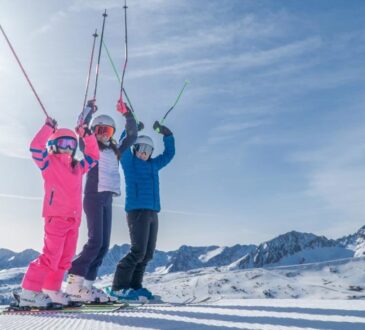
The Cultural Performances at the Golden Eagle Festival in Mongolia are an integral part of the event, providing visitors with a unique insight into Kazakh culture and heritage. Here’s what you need to know about these performances:
- Celebration of Kazakh Culture: The Cultural Performances at the Golden Eagle Festival showcase the rich cultural heritage of the Kazakh people, who are the primary inhabitants of Bayan-Ölgii Province in western Mongolia.
- Traditional Music: The festival features traditional Kazakh music performances, including instrumental music played on traditional instruments such as the dombra (a type of lute) and the kobyz (a type of string instrument).
- Dance Performances: Colorful and energetic dance performances are an essential part of the festival. Traditional Kazakh dances, such as the “kara zhorga” (black horse) and the “kara koz” (black eyes), are performed by local dancers in vibrant costumes.
- Costumes and Attire: Performers often dress in traditional Kazakh clothing, including elaborately embroidered robes, fur-lined hats, and intricately decorated headdresses, adding to the visual spectacle of the event.
- Narratives and Storytelling: Some performances include storytelling and narrative elements, recounting tales of Kazakh heroes, legends, and folklore.
- Cultural Demonstrations: In addition to music and dance performances, the festival may also feature demonstrations of traditional Kazakh crafts, such as felt-making, embroidery, and horse tack making.
- Horse Racing: While not strictly a cultural performance, horse racing is a traditional Kazakh sport that is often featured at the Golden Eagle Festival. Visitors can watch thrilling horse races, with riders competing in various age categories.
- Audience Participation: Audience participation is often encouraged during cultural performances, with visitors invited to join in the dancing and celebrations.
- Cultural Exchange: The Cultural Performances at the Golden Eagle Festival offer a unique opportunity for cultural exchange, allowing visitors to learn about and experience the traditions, customs, and way of life of the Kazakh people.
- Photography and Souvenirs: The performances provide excellent opportunities for photography, allowing visitors to capture stunning images of the colorful costumes, lively dances, and vibrant atmosphere of the festival. Additionally, visitors can purchase handmade crafts and souvenirs from local artisans.
- Respect for Tradition: Visitors should be respectful of the local culture and customs while attending the festival. It’s essential to ask for permission before taking photographs of people and to follow any guidelines provided by the event organizers.
- Travel Considerations: Bayan-Ölgii Province, where the festival takes place, is quite remote, and travel to the area can be challenging. Visitors should plan their trip carefully and consider hiring a local guide or joining a tour group to make the most of their experience at the Golden Eagle Festival.
What Are the Eagle Training Demonstrations at The Golden Eagle Festival?
Eagle Training Demonstrations at the Golden Eagle Festival in Mongolia offer visitors a unique opportunity to learn about the ancient art of training and hunting with golden eagles. Here’s what you need to know about these demonstrations:
- Ancient Tradition: Eagle Training Demonstrations showcase the traditional Kazakh practice of training golden eagles for hunting, a tradition that has been passed down through generations of nomadic hunters.
- Trainer and Eagle Bond: The demonstrations highlight the deep bond between the eagle hunter (known as a berkutchi) and their majestic golden eagle. The relationship between the trainer and the eagle is based on trust, respect, and mutual understanding.
- Training Techniques: Visitors have the opportunity to observe the techniques used by eagle hunters to train and communicate with their eagles. This includes methods for teaching the eagle to obey commands, such as coming when called and returning to the trainer’s arm.
- Commands and Signals: Eagle trainers use a combination of verbal commands, hand signals, and whistles to communicate with their birds. Visitors can learn about the different commands and signals used to direct the eagle’s behavior during hunting expeditions.
- Handling and Care: Demonstrations also cover the proper handling and care of golden eagles, including feeding, grooming, and ensuring the bird’s health and well-being.
- Eagle Behavior: Visitors can learn about the natural behavior of golden eagles and how eagle hunters harness these instincts to train them for hunting.
- Bond and Trust: The demonstrations highlight the strong bond of trust and respect that exists between the eagle hunter and their bird. Visitors can witness firsthand the deep connection between the trainer and the eagle.
- Interactive Experience: Some demonstrations may allow for audience participation, giving visitors the opportunity to interact with the eagles and their trainers under supervision.
- Photography Opportunities: Eagle Training Demonstrations provide excellent opportunities for photography, allowing visitors to capture stunning images of the eagles in action and the bond between the trainer and the bird.
- Cultural Exchange: The demonstrations offer a unique opportunity for cultural exchange, allowing visitors to learn about the ancient art of eagle hunting and the traditional way of life of the Kazakh people.
What Are the Traditional Costumes at The Golden Eagle Festival?
Traditional costumes play a significant role in the Golden Eagle Festival in Mongolia, adding to the cultural richness and authenticity of the event. Here’s what you need to know about the traditional costumes:
- Kazakh Attire: The traditional costumes worn at the Golden Eagle Festival reflect the cultural heritage of the Kazakh people, who are the primary inhabitants of Bayan-Ölgii Province in western Mongolia.
- Elaborate Embroidery: Kazakh traditional clothing is known for its elaborate embroidery, intricate patterns, and vibrant colors. Costumes often feature geometric designs, floral motifs, and animal imagery.
- Materials: Traditional Kazakh clothing is typically made from natural materials such as wool, felt, leather, and fur, reflecting the nomadic lifestyle of the Kazakh people.
- Robes and Coats: Men typically wear long, flowing robes known as “chapan” or “del” and coats made from sheepskin or goatskin, which provide warmth and protection against the harsh Mongolian winters.
- Hats and Headwear: Traditional Kazakh headwear includes fur-lined hats known as “kalpak” or “shapan,” which are often adorned with feathers, beads, and other decorative elements.
- Women’s Attire: Women’s traditional clothing includes long, flowing dresses known as “shapan,” which are often decorated with embroidery and other embellishments. Women also wear headscarves and shawls to cover their heads and shoulders.
- Jewelry and Accessories: Traditional Kazakh costumes are often accessorized with jewelry made from silver, gold, and semi-precious stones. Jewelry may include necklaces, bracelets, earrings, and rings.
- Footwear: Traditional Kazakh footwear includes leather boots known as “charwak” or “yarghuch,” which are designed to provide warmth and protection in cold weather.
- Color Symbolism: Colors hold symbolic meaning in Kazakh culture, with certain colors representing different aspects of life and nature. For example, blue is associated with the sky and water, while red symbolizes bravery and strength.
- Cultural Identity: Traditional costumes are an important symbol of cultural identity for the Kazakh people, reflecting their unique heritage, customs, and way of life.




